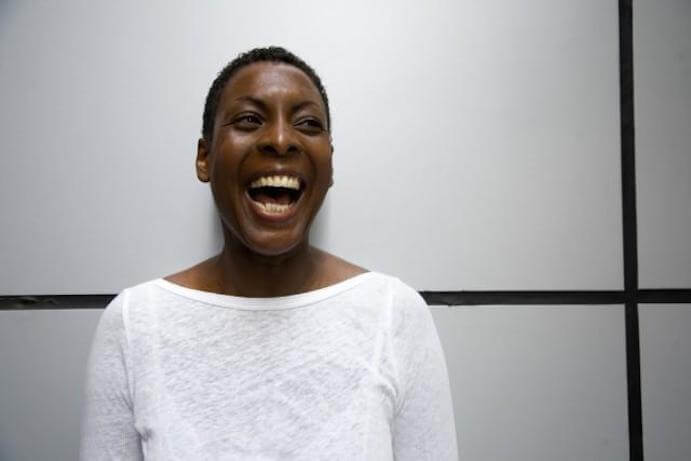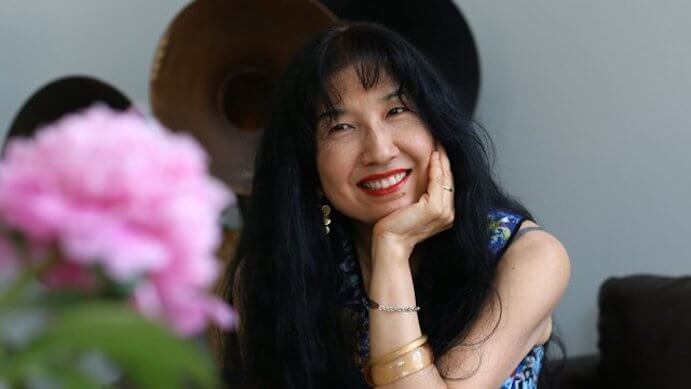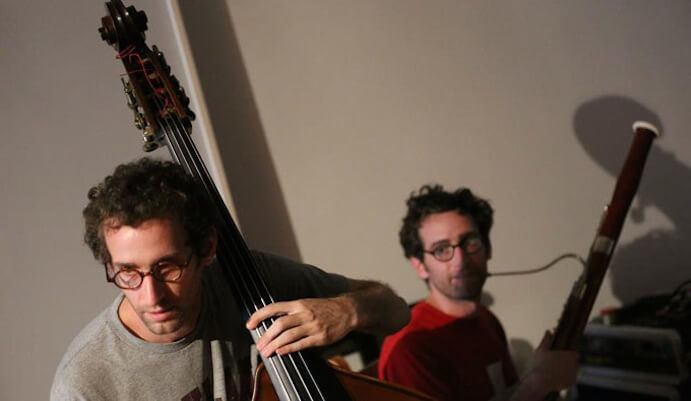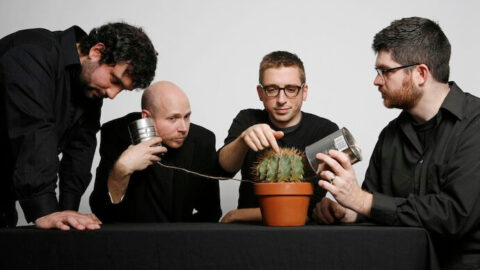Friday, May 1, 2015 marked the opening of the fourteenth annual Look and Listen Festival, a series dedicated to presenting new music from within New York City’s most “awesome art spaces.” Perhaps the best summary as to the importance of this effort came in the opening remarks of the evening’s emcee: eminent performer, artist, and Q2 Music host Helga Davis.
“This is why we live in New York,” Davis began, “why we live in cramped little apartments and pack ourselves onto the subway every day; to go places we’ve never been, to hear things we’ve never heard.”
These comments came after Davis took a moment to survey the moderate crowd — filed neatly along the amphitheater-style seating on what is known as “the stoop” at Fort Greene’s BRIC Arts Media space — asking how many were in attendance for the first time. The response was an encouraging majority, and if Davis’s insistence was not enough, the ensuing diversity of the evening’s musical program seemed to generate sufficient gravity to inspire returning.

The night’s offerings began with contemporary music champions Sō Percussion, now in their fifteenth year of broadening the parameters defining the modern percussion ensemble. Indeed, as the chosen spokesperson for the group Adam Sliwinski explained, when composer Bryce Dessner approached the group with the guitar-inspired concept for his Music for Wood and Strings (2013), Sliwinski’s self-proclaimed inabilities with strings and frets resulted in the fabrication of four unique, dulcimer-like instruments, each capable of channeling the folk and rock roots of Dessner’s music while allowing the group to strike and bow in complex rhythms becoming of four master percussionists. The instruments, which were created by instrument builder Aron Sanchez (Blue Man Group, Buke and Gase), were assembled from various components of electric guitars, laid horizontally, and struck with unsharpened pencils. The sound was amplified through four small electric amps or monitors and filled the intimate space with a nebulous wash of pleasing, tinny harmonies and metallic tones. The piece undulated through various sonorous and rhythmic metamorphoses, at times evoking shades of Steve Reich’s Drumming, culminating in a kinetic finish, seemingly designed to motivate the raucous applause that followed.

Miya Masaoka‘s Prelude, Bones (2015), one of a number of world premieres to be heard throughout the festival, followed in stark contrast to Dessner’s stabile energy with a somber, ritualistic performance. Masaoka was adorned in what the composer described as a “percussion-dress,” a sort of black, vinyl kimono draped with temple blocks and a cowbell hung about the neck which brought to mind images from films like The Matrix or Johnny Mnemonic. She emerged to a pre-recorded track of crickets and crackling static from within a large, wooden globe (one of the many pieces of art that comprise BRIC’s Mapping Brooklyn exhibition). During her slowly paced perambulation toward the koto at center stage (a traditional, Japanese stringed instrument), she produced subtle vocalizations and played her percussion-dress with yarn mallets. From the koto, Masaoka seemed to be improvising sparse, melodic motifs, while cuing varying pre-recorded accompaniment with the use of a digital foot pedal. While compelling in its theatricality, Masaoka’s performance communicated a sort of incompleteness or uncertainty hanging over the piece. In her commentary, Masaoka revealed that Bones will, in fact, serve as the beginning of a much larger work, yet to be written.
The final work and second world premiere of the evening, Doug and Brad Balliett‘s Jezebel the Proud (2015), reverted to somewhat more traditional forces. Offering yet another contrasting sample from Look and Listen’s pu-pu platter of styles and aesthetics, the Balliett Brothers’ work rounded the final base of the evening in providing something new for those who failed to be enthralled by the unyielding energy of Dessner’s Music for Strings and Wood or taken in by the introspective avant-garde of Masaoka’s Bones.

The Brothers Balliett Ensemble, including two English horns, guitar, bassoon and cello, was joined by soprano Laura Bohn, whose instrument and dramatic sensibility provided a strong infusion of depth to Brad Balliett’s skillfully crafted but somewhat two-dimensional score. The libretto, penned by Doug, purports to sympathize with the Old Testament character Jezebel, whose name has come to be synonymous with temptress or whore since the telling of her story in the first Book of Kings. To quote Brad’s program notes, “King Ahab, widely agreed to be the most evil of all the ancient kings of Israel, might be what we’d call a left-leaning president today, [who] legislated in favor of religious freedom, diplomacy with neighbors, and suppressed violent zealots.” Jezebel, it seems, was a victim of Ahab’s forward-thinking policies, having been his queen, imported from the neighboring kingdom of Sidon, not only with political value, but to her detriment, with her own, foreign gods. This perceived spiritual perversion is what led to Jezebel’s subsequent, gruesome demise.
As a unit, Look and Listen’s opening night served its mission with excellent resolve. Showcasing these works in an unconventional gallery space made for a clear analogy to the importance of new music and art, their potential dialogue, and how and where these media are consumed. Even more, being in the midst of the Mapping Brooklyn exhibition, the clear connection to community and community supported outlets for this exciting work was illustrated almost literally.
























